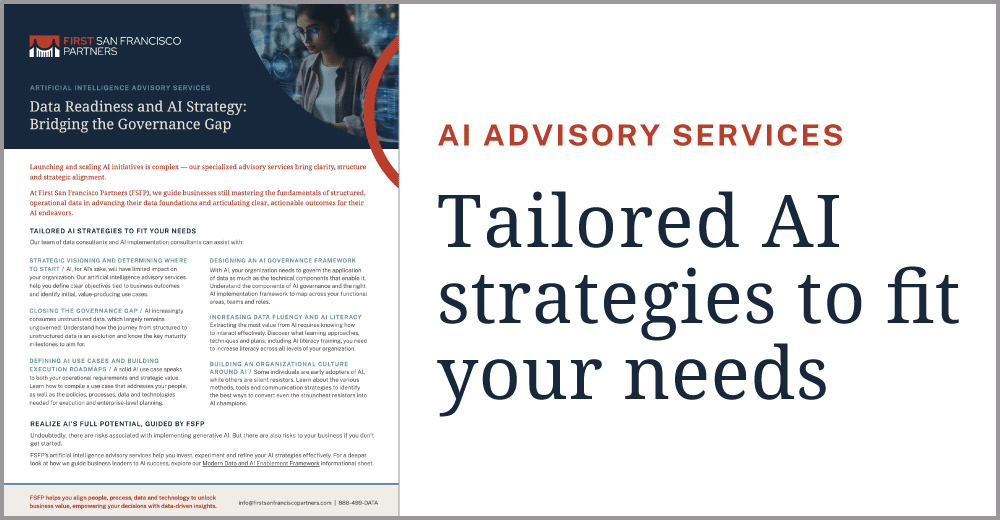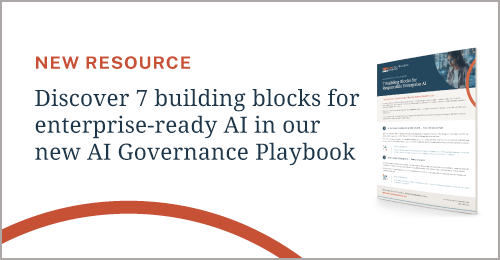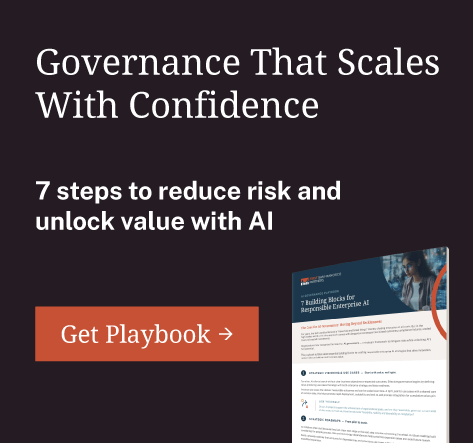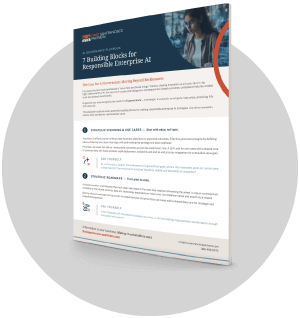Many leaders believe that AI success is directly related to technology; specifically, models, infrastructure and data pipelines. A recent article by McKinsey confirms that the bigger barrier to success is people, not tools. Their research found that for every dollar spent on AI development, organizations should expect to spend three dollars on organizational change management (OCM).
That’s because scaling AI isn’t just about algorithms or workflows. It’s about people adopting, trusting and working alongside AI as a part of their daily work. To unlock AI’s full value, managing the human side of change is just as critical as managing the data, governance and models behind it.
Why AI Initiatives Fail Without OCM
Many AI projects fail not because the models don’t work, but because the people who need to use them don’t trust the results. Adoption stalls. Teams fall back on familiar, trusted processes. Costs in the form of rework, delays and technology spend spiral.
Enter the human side of AI adoption challenges. Without intentional OCM working along slide and integrated into AI initiatives, employees are left unsure of how their roles will change, unclear on the purpose of the technology and skeptical about whether they can trust the results. The current outcome is fear, confusion and fatigue that can stall even the most promising initiative.
Even organizations with strong technical foundations are at risk. Autonomous business rules (sematic intelligence) and well-structured data can only go so far if people and machines don’t share the same context.
Managing AI context ensures that humans and AI “speak the same language.” This can be achieved through common definitions, governance and clear communication. Without it even well-built models can feel like black boxes, leaving employees reluctant to rely on them.

AI technology is only a piece of the puzzle. Your people bring AI tools to life.
Best Practices for AI Change Management
How do you minimize hidden costs and optimize your AI program for success? Start with these best practices:
- Start at the top with AI and data literacy: Executives should understand how AI supports their business. They need a common vernacular to discuss value and a consistent way to measure the success of AI programs.
- Focus on role-based data fluency: Not everyone needs to be an AI expert. Fluency is required where business meets technology. Creating an environment where AI’s role is to augment people’s work, not replace them builds a sense of control and removes fear.
- Communicate with clarity: Link AI initiatives to strategy, goals, and measurable outcomes. Clear communication fosters trust and drives the adoption of AI.
- Empower influencers and users: Prioritize training for those most directly impacted by AI. When early adopters and influencers feel confident, they become advocates who help accelerate broader adoption.
- Measure value beyond efficiency: Time savings are important, but they’re not the full story. Track effectiveness, trust, and sustained adoption. These are the real markers of long-term success and the best defense against AI change fatigue.
- Don’t build AI in a vacuum: Linking existing data governance and data management activities to AI initiatives from the start will ensure that data is ready for AI, and AI understands how to consume data.
Built in parallel, these practices create a foundation where people feel informed, empowered, and aligned. Effective OCM is what turns AI from a technical project into a trusted, long-term business capability.

With AI evolving constantly, the human touch is more important with these tools than ever before.
FSFP’s Differentiator
At First San Francisco Partners, we believe that AI governance is an extension of data governance, not a new capability, and that people are at the core of trusted data. That’s why organizational change management is built into every engagement, ensuring that technology investments are matched with the people, processes and culture needed to make them successful.
Here’s how we do it:
- Role-based fluency programs and data literacy enablement ensure that executives and practitioners possess the right skills for their respective roles.
- Programs to exploit existing business riles and knowledge to create Semantic intelligence. Ensuring shared context between people and machines through glossaries, taxonomies, and ontologies. This strengthens trust, scalability, and AI governance adoption.
- Nimble, fit for purpose data and AI governance frameworks that reduce AI change fatigue and connect AI directly to the data required to make it work. This approach ensures adoption and scales AI over the long term.
We also bring our experience with platforms like Salesforce and Agentforce to help organizations rapidly harmonize their data, inside and outside the platform. While emboldening users with the confidence learning and change bring. Easily preparing for the safe and scalable adoption of autonomous agents.
AI success isn’t just about building smarter models or faster infrastructure. True value emerges when technology, people, data, and governance converge to drive adoption and trust. If your organization is investing heavily in AI but struggling to see results, it’s worth asking: have you prepared your people for the value and change AI brings?
First San Francisco Partners helps organizations harmonize people, process, data and technology for trusted AI adoption. We bridge AI and data literacy, role-based fluency, semantic intelligence and governance to make this transformation possible. With our expertise and partnerships, including Salesforce and Agentforce, we prepare clients for safe, scalable use of AI and autonomous agents.
Ready to prepare your people for AI success? Learn more about FSFP’s AI Advisory Services.
Array




